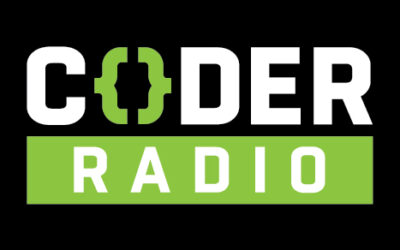Apps are the newest thing! Apps are dead, long live the cloud! The cloud is old hat, it’s all about bots and machine learning now! If you follow the tech press like I do, you might be led to think that we have come through some sort of supersonic period of technological creative destruction. It’s certainly true that we’ve seen a good deal of innovation, since the release of the iOS App Store in 2008, but it isn’t entirely accurate to draw a linear progression from apps all the way to bots in terms of direct technological replacement. Apps, Bots, and the Cloud each bring something to the modern way we approach software presently.
Apps: It’s hard to overstate how much Apple releasing the App Store changed standards in the wider software development industry in terms of user experience and visual design. Simply put, the popularity of iOS devices and apps raised the minimum bar for what is acceptable UI for even line of business applications and elevated the role of designers from Photoshop jockeys to having a head seat at the table on most development projects. Of course, with the good also comes bad – I’ve sat in more than one meeting at large enterprises where two designers derailed a meeting by having passionate but ultimately futile debates over Helvetica / Helvetica Neue and different shades of blue.
Bots: We are way too early in the technical life-cycle for bots to make any sweeping statements about their influence on software development as a whole, but if taken through the lens of apps, they can be seen as almost a reaction to the design-heavy / design-first focus that apps have taken. This can of course be seen in their minimal UI but also in the purity of their focus on functionality above all else. Ultimately, the promise of bots is to remove that one to one relationship between user actions and software actions that apps focus on; ideally, the bots of the future will predict what you want to suggest it to you / do it for you unlike apps where you have to initialize all actions. Unfortunately, bots are little more than glorified text interfaces running some clever scripting on the cloud. We’ll need to see some pretty significant advancement in bot functionality before they are really useful and so far the top tech vendors are taking radically different approaches:
- Microsoft: Microsoft wants you to build bots on their Bot Framework and hopes that you’ll tightly integrate with Azure or at least Skype. While there are definitely problems with their approach (for instance splitting the community by having both a C# and JavaScript SDK) it is likely the most interesting for third party developers that want to develop on one of the big vendors’ tooling. Still, I’ve been burned by betting on new Mircosoft platforms before (I was one of the fools who made an investment in Windows 8 / RT) and I’ll need to see some re-assuring signs that Microsoft is going to continue active development and support on this before I jump in with both feet.
- Facebook: Zuck and Co have one question for you – ‘what is it going to take get Facebook Messenger to be your default messaging platform?’ Facebook’s bot implementation is the most disappointing, since it’s one of the more interesting technically (their implementation of Wit.AI shows a lot of natural language processing potential) but is ultimately rendered useless (and frankly silly) by the huge strategy tax of being tightly coupled to Facebook.
- Apple: What hasn’t been said about Siri that hasn’t been said about a 1992 Honda Civic? It’s relatively reliable if you know what it’s good for but lacks much of what would be desired at this point. WWDC is in couple of weeks and if Apple doesn’t deliver, then they’re likely to be an also ran in the bot space. My money is on some improvements to Siri, but Apple is likely to philosophically opposed to data mining and opening this sort of data to third party developers to make any bot framework they may provide anything more than a minor curiosity for the most hardcore of Apple loyalists. Apple will likely be left with little choice but to use it’s control of the iOS platform to either not allow competing bots on their platform or (far more likely) allow them but now allow them to integrate on a system level greatly degrading their usefulness to iOS users.
- ‘Google:’ In place of a queen you will have a colorful gender-neutral ‘G’, not dark but productive and intuitive as the dawn All shall love Google and despair! Apologies to Tolkien but Google’s shown what is easily the most impressive bot to date and it’s name is simply Google. While it’s heartening to see such impressive predictive reasoning on a bot, it’s also a little scary in terms of the privacy implications and what it means for the greater bot ecosystem. Simply put, Google is in the best position to make the best bot of anyone in the industry and probably of anyone in the world in terms of targeting the mass-market consumer user-base. Ironically, Google’s aptitude in bots and related technologies will likely stifle innovation, since Google will be able to do a better job for cheaper (since they won’t charge at all) which will likely push many smaller potential competitors out of the market. At IO, they did say there’d be some sort of developer access, but right now they’re just making the best bot themselves and that’s a little disheartening as a small software vendor.
In part, it’s hard to see what bots really mean for the industry since there are different approaches being taken for them; for instance, they will likely be far more useful for Android users than for iOS users initially. Still, the common thread here is using personal and cohort data to predict what actions you might want to take via a simple voice or text interface.
The Cloud: Bots may be getting all the tech press but they’d be nowhere without the cloud. Or would they? What is the cloud anyway? Well, do you remember Thomas Watson of IBM fame who said: “I think there is a world market for only five computers.” On the face of it that’s laughable wrong but in more practical terms of what computers used to be defined as, he’s basically right. Instead of computers we call them “clouds” (think Azure, AWS, etc) and we are basically renting usage from them which will sound awfully familiar to anyone who has ever rented time on an mainframe in the 80s. Don’t get me wrong I am well documented as being bullish on cloud technologies (i.e. Docker) but to be honest the most interesting and impact-full innovation of the cloud for most people’s day to day use is the pricing model. That’s right. The main reason the cloud has had such a positive impact on the software development industry and the greater world as a whole is that it’s cheap. Cheap computing power allows even small companies (like mine) to invest and try new product ideas out with very little financial investment in infrastructure.
So we’ve taken a look at apps, bots, and the cloud but what is the point in all of this? Well, all of these things go together. You see bots aren’t replacing apps or the cloud. There is no linear progression. Bots and whatever come after them are and will likely continue to be built on the cloud and possibly viewed via or at least supplemented by traditional mobile apps. In fact, my bet is that for a few years the key to successful software products will be to blend all of these technologies together in natural ways.
Questions? Comments? Uncontrollable rage? Reach out to be on Twitter.






